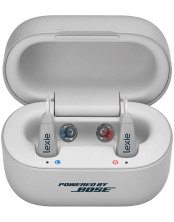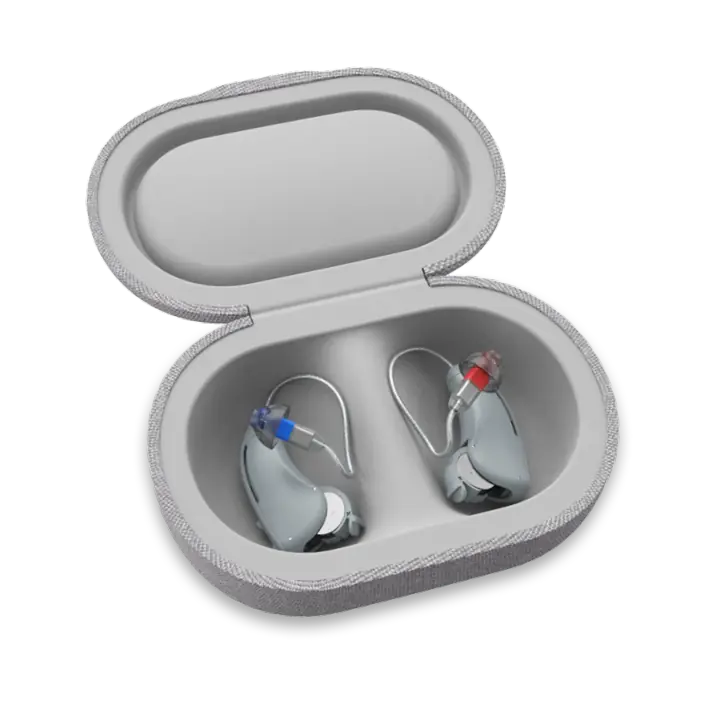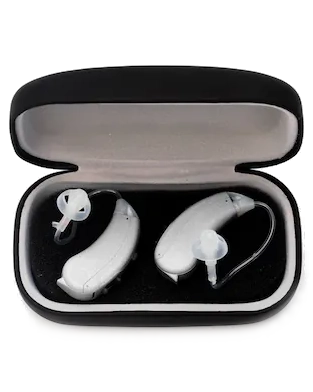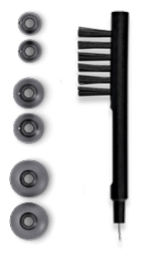Hearing Aid Not Working? How to Fix Common Problems
Published: October 2, 2020
Updated: March 24, 2023
There can be many reasons you might not hear with your hearing aid. You could discover the problem, and even fix it, yourself if you know what to look out for.
How to Fix Common Hearing Aid Problems
A hearing aid suddenly ceasing to function can be very annoying – especially if you are in the middle of an important conversation, meeting, attending a lecture, or watching a movie. It can be inconvenient, and if you do not know the reason for the sudden silence, you may not be able to rectify this as quickly as you might like. To fix the problem you’ll quickly want to identify the reasons you might not hear with your hearing aid.
There are several possible reasons for a hearing aid to stop working. Sometimes there is a problem with the hearing aid itself, with the battery, with handling and care issues, while others may have to do with how you use it.
To identify the problem ask yourself these questions:
- Did I replace the battery correctly?
If you have battery operated hearing aids, check that you have removed the colored sticker tab from the battery and that you have inserted the battery into the battery compartment of the hearing aid. It is also important to check the orientation of the battery: the flat side should face upward, and the rounded side should face the base of the battery compartment door. Make sure that the battery is not upside-down. - Did I close the battery door properly?
Once the battery is positioned correctly, make sure that you close the battery door properly. It should be completely closed so that the battery makes proper contact with the terminals inside. If you struggle to close the battery door, check that the battery is properly positioned instead of trying to force the door closed, which may cause the door to break.
- Are the batteries still working?
It could be that the battery is no longer working, and so it may be time to replace the battery. If you have a battery tester, test the battery to see if there is still sufficient power. If so, continue looking for the problem. If not, replace the battery. - Are the batteries within the expiry date?
Check the expiry date on the battery packet. Has the battery expired? Although expired batteries can still work, they won’t last as long as those that are still in date.
- Is the battery the correct size?
It may happen that you accidentally purchased the wrong size batteries. Inserting a smaller size battery can be a reason for the hearing aid not work. Check on the size of the last packet you used. Battery sizes are color-coded so if you cannot remember the number, it may be easier to remember the color. - Are the hearing aids charged? Rechargeable hearing aids need to be charged every 18 to 24 hours depending on your usage habits. If you are using rechargeable hearing aids, try and charge your hearing aids in the charging case for a few hours to see if something as simple as a flat battery could be the cause for your hearing aid not working.
- Is the hearing aid properly inserted?
If the earmold slim tube or receiver and dome are not inserted properly or positioned correctly in the ear canal, this can affect the sound you hear. - Have I recently cleaned the hearing aid?
If the earmold or slim tube is blocked with wax, you may not be able to hear since the passage through which sound is delivered into your ear is blocked. If you are using a receiver-in-the-canal (RIC) hearing aid, check that the wax guard (cerustop) behind the dome isn’t blocked with wax. It may also be helpful to wipe the dome or clean it with the little brush if provided. The slim tube can be cleaned using a cleaning wire or small piece of fishing line threaded through the tube. In the case of RIC hearing aids, do not attempt to insert anything into the receiver! Earmolds can be washed in warm soapy water and if there is a wax plug you can remove it using a small brush or other cleaning tools. Please remember to always follow the cleaning instructions suggested by your hearing healthcare provider or the manufacturer. - Have I been putting my hearing aids in the dryer?
Moisture is the number one enemy of hearing aids. Although many hearing aids today have impressive IP ratings and are designed to withstand water and humidity, you should do what you can to make sure they are kept dry. Moisture can be absorbed through the holes in hearing aid batteries that are designed to take in air for activation, and as a result, this can shorten battery life. If you have behind-the-ear (BTE) hearing aids, the tone hook may also become blocked due to swelling of the little filter inside the tone hook as a result of moisture. Moisture in the earmold can also affect the quality of sound. It is recommended that you place the hearing aids in a drying system at night. There are several different drying options available – from desiccants such as drying tablet kits and reusable pellets to electronic dehumidifiers, also known as hearing aid dryers. - Is something wrong with the slim tube or receiver?
If the slim tube has been twisted or broken, or the receiver has been damaged this can affect the sound. If you notice something not quite right here, visit a hearing healthcare professional to have this checked and if necessary, replaced. - How long have I had the hearing aids, and when last have they been serviced?
Hearing aids should be serviced annually. It may be that your hearing aids are due for service. Usually, the services while the hearing aids are under guarantee (depending on the manufacturer) are free of charge. If you think your hearing aids need a service, take them to your hearing healthcare professional who can send them off to be serviced. They can be checked thoroughly and cleaned. If the amplifier isn’t functioning correctly, or if there are any issues with the microphone or receiver, these parts can be repaired or replaced if necessary. - Am I using the volume control?
It is possible that you accidentally reduced the volume to the minimum level. Increase the volume to see whether you can hear something. If you do not know where you are in terms of volume control settings, often, opening and closing the battery door will reset the hearing aid to default settings. - Did I mute my hearing aids? Some hearing aids have the option to mute them. Selecting the mute option on your hearing aid is the same as selecting the mute option for your television via the television remote control. Even though there is no sound or audio coming from your television it is still playing. The same applies to your hearing aid. Although there is no audible amplified sound coming from your devices when muted, it will appear as if it has been switched off and will continue to drain the battery. The mute function is definitely a quick and effective way to stop the sound from your hearing aid, albeit only for short periods of time.
- Am I using the different programs?
Your hearing healthcare professional may have given you different programs to use in different listening environments. Make sure that you do not have the hearing aid on the wrong program, and that you have not accidentally activated the “mute” program (if available). If you have an older hearing aid with an OTM switch, make sure that you have the switch set to microphone (M), and not too off (O) or telecoil (T). - When last have I spoken to a hearing healthcare professional?
You may require some adjustments to the settings of your hearing aids. Your earmold may also need to be replaced if it has become loose or damaged. Earmold tubing should be replaced whenever it becomes hard or discolored. - Has my hearing changed?
Not being able to hear with your hearing aids may also be a sign that your hearing has changed, and the current settings are no longer adequate. - When last did I have my hearing tested?
Having your hearing checked annually is important to monitor your hearing, and your hearing aids can be re-programmed should your hearing ever change. - When last have I had my ears checked for wax?
If your ear canals are blocked with wax, it is possible that you are not hearing with the hearing aids because the sound is not getting beyond the wax plug. Ask your hearing healthcare professional to check your ears for wax and if necessary, have this removed. - Do I have an ear infection?
Ear infections can temporarily worsen your hearing. If you have any pain or discomfort in the ears, visit a hearing healthcare professional for a middle ear test (tympanometry) to check for the presence of middle ear fluid. If you do have an ear infection, you will most likely be referred for medical treatment. - Has my health changed?
Changes in your physical or mental health can affect your hearing system and your perception of sound. Hearing loss is associated with certain medical conditions and a change in these conditions can lead to a change in the hearing levels. If your hearing has deteriorated then the amplification that the hearing aid provides may not be sufficient any longer.
Your hearing healthcare professional can advise you on the best action if you were unable to find a solution to your problem.






